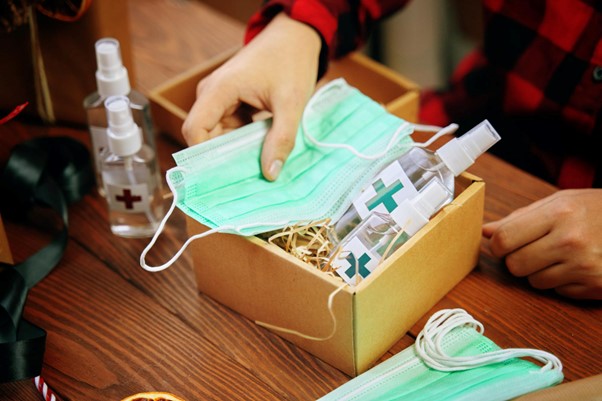The global Antiseptics and Disinfectants Market size is likely to reach USD 17.8 Bn by 2027, expanding at a CAGR of 8.2% during 2020–2027. This growth is attributed to rising health awareness, increasing expenditure on healthcare, and improved production methods with the help of technology.
What are Antiseptics?
Antiseptics are antimicrobial chemical agents that are applied to a living object such as tissue or skin to destroy microbial organisms. They inhibit the action of microbes on the skin, to help in infection control.
What are Disinfectants?
Disinfectants are chemical agents that destroy bacteria on non-living surfaces. Most disinfectant chemicals are highly concentrated and hence they are mixed with water before their use.
The common types of disinfectant chemicals include chlorine, ethanol, phenol, calcium & sodium hypochlorite, and iodophor, among others. On the other hand, hot water, alcohol, vinegar, and some essential oils come under chemical free disinfectant solutions. Surface disinfectant such as household bleach use is common for home cleaning purposes.
Antiseptic: Safety, and Precautions
The application of antiseptics with a high concentration may result in skin irritation or chemical burns. When using antiseptic products at home, one must follow the safety precautions provided on the bottle or boxes.
Below are some safety precautions measures to follow:
- Highly concentrated antiseptics should be diluted before their application to the skin, as highly concentrated products such as chlorhexidine could cause severe skin irritation or chemical burns.
- Antiseptics that are brought from pharmacies or other over-the-counter stores should not be used for more than a week, as they are not suitable for long-term use.
- Antiseptic use should be avoided on eye infections, large wounds and burns, animal scratches and bites, and on the skin area where a foreign object is stuck.
Get a Free Sample Report Here: https://bit.ly/3Tt2s0K
Types of Antiseptics
There are different types of antiseptics solutions available, some are safe to be used at home while others are used in clinics or hospitals under the observation of healthcare professionals. Based on type, the application of antiseptic also varies.
Below are some commonly known antiseptics types with their application:
- Antibacterial Dye – It is applied to treat skin wounds or burns.
- Phenol Derivative (halogenated) – It is used in soaps and skin treatment solutions.
- Alcohols Such as Ethyl and Isopropyl – Mostly used for aftershave lotions, hand lotions, and other cosmetics purposes.
- Chlorhexidine and other Diguanide – They are used before operations.
- Quaternary Ammonium Compound – It is mostly used to destroy bacteria, mold, and viruses on the body.
- Quinolone Derivative – It is used to treat wound infections.
- Peroxide and Permanganate – These are used for disinfecting the skin, and can also be used as a mouthwash.
What is the Difference Between Antiseptics and Disinfectants?
Antiseptics and disinfectants are widely used for infection control measures. They help in destroying or controlling the growth of microorganisms such as viruses, bacteria, mold, and fungi.
- The key difference between them is: Antiseptics are applied on the external surface of the living body to protect it from microbes while disinfectants are applied on non-living or inanimate objects to destroy microbes on their surfaces.
- Disinfectants stop the growth of microorganisms on the surfaces that they are applied on, whereas antiseptics destroy microbes that exist in the living tissues.
- Antiseptics are not injurious to the skin while disinfectants can be very toxic to the body hence skin contact with them should be avoided.
What Are Enzymatic Cleaners?
Some organic stains caused by kids or pets are not easy to get rid of, even with the help of chemical disinfectants. For removing such stains, enzymatic cleaners can be considered. Any cleaning agent that includes biological methods to break down molds, waste, or organic stains is identified as an enzymatic cleaner.
Enzymatic cleaners contain non-pathogenic bacteria to fasten up the breakdown process of organic stains. They not only speed up the waste stains decomposition but also help in getting rid of the odor.
Know More: https://bit.ly/3UOCPbL
Key Insights
- Rising awareness about healthy living, improved lifestyle, and rising healthcare expenditure are the major drivers in boosting the consumer demand for antiseptics and disinfectants.
- Improved production with the help of technological advancements is helping the efficient fulfillment of the rising consumer demands for home cleaning and personal hygiene products.
- Bio-Cide International, Inc., P&G, Reckitt Benckiser Group plc, SC Johnson Professional, and The Clorox Company are some of the key players in the industry.

